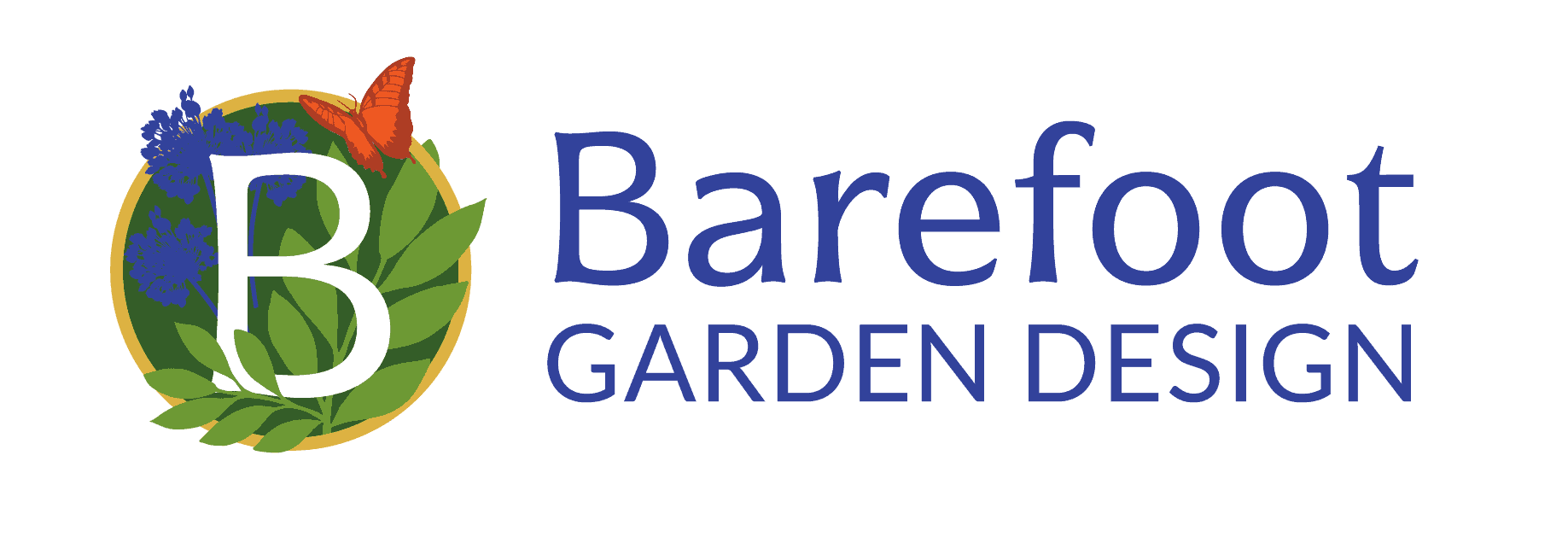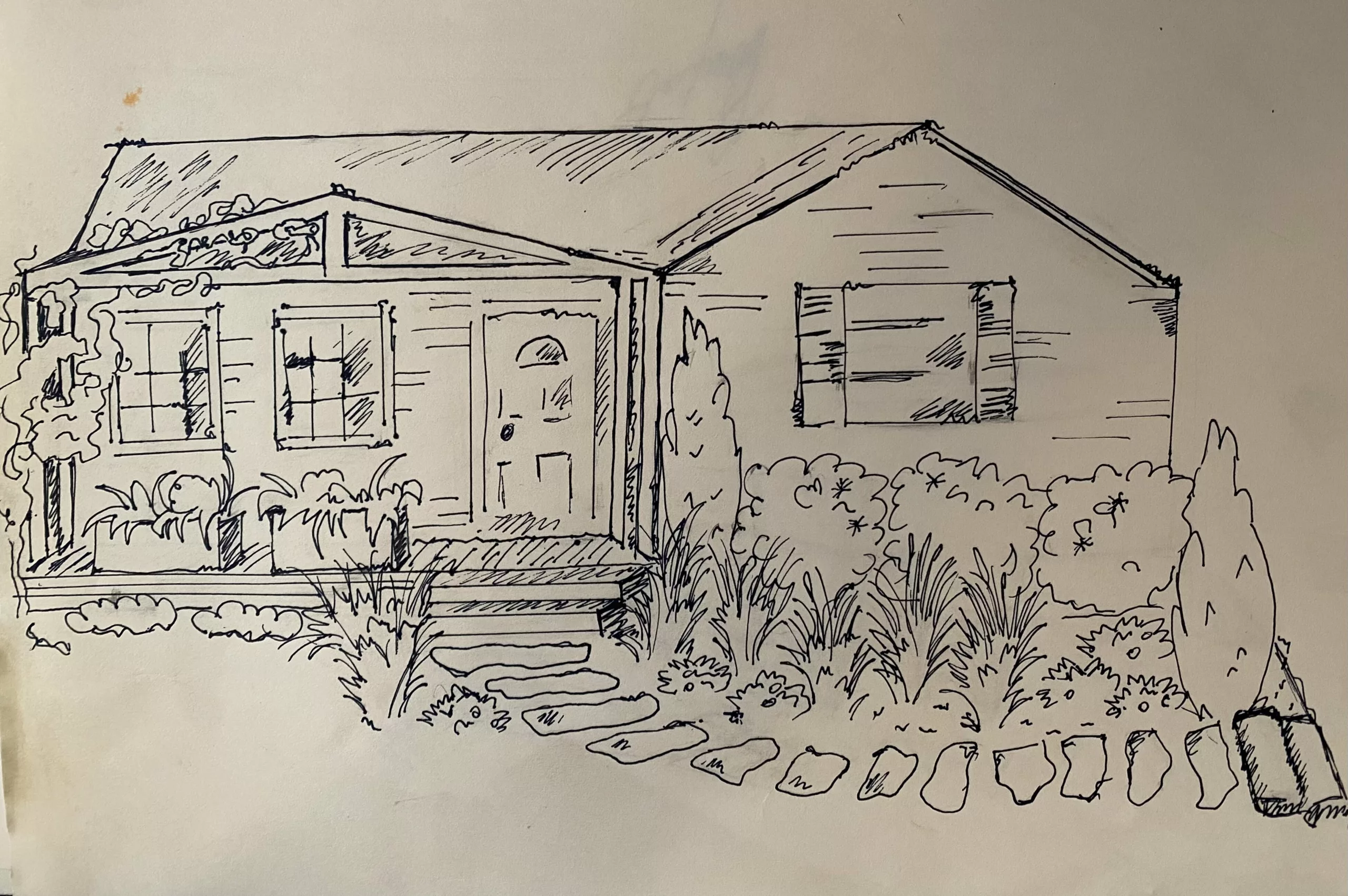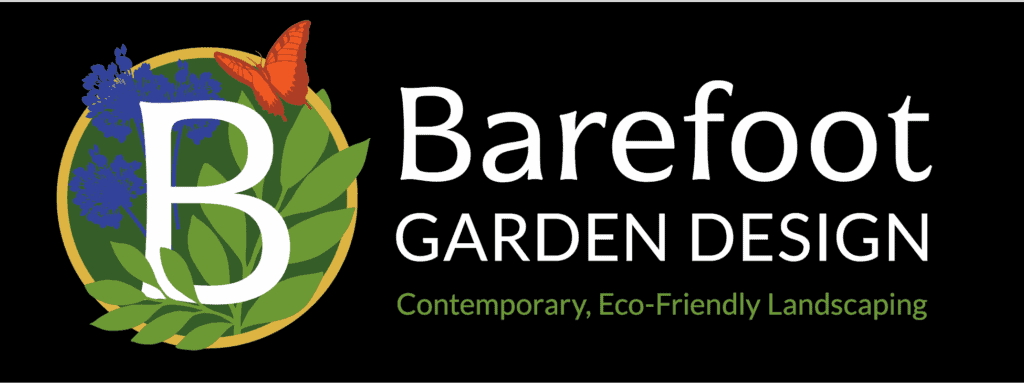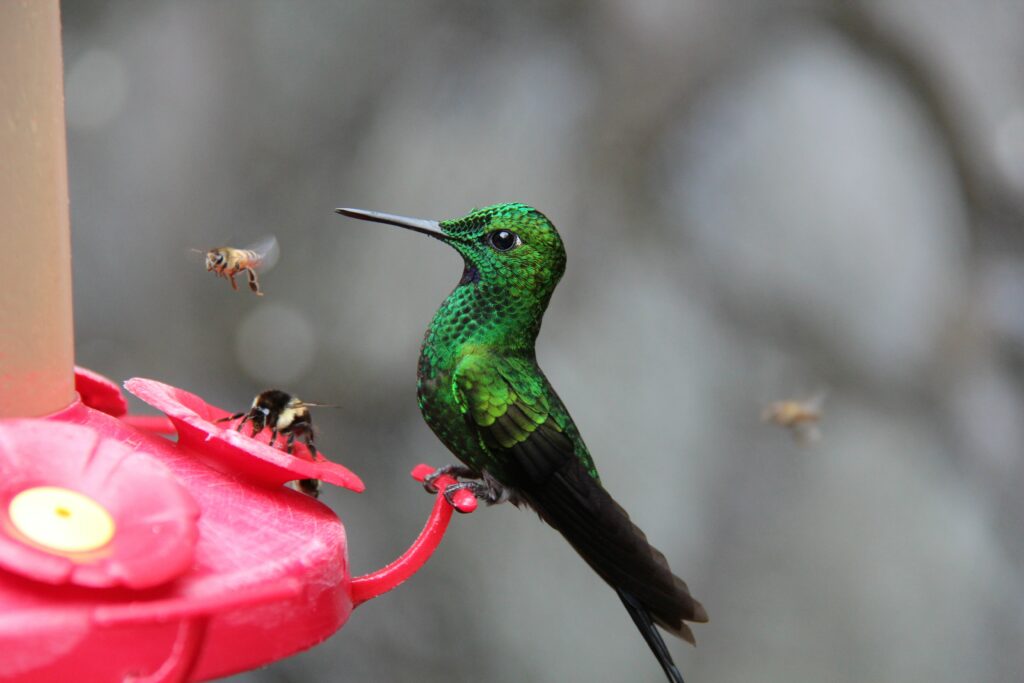
Introduction
Hummingbirds are adorable and beautiful birds, who also serve as pollinators to some of our favorite flowers and trees. It’s no wonder that so many people want to know how to attract hummingbirds to their gardens.
What you may not know about these exquisite native birds is that they make up a huge percentage of avian pollinators. In fact, of 2,000 species of birds, hummingbirds make up 25% of pollinators. As specialized pollinators, many flowers and plants would not be able to exist without hummingbirds. Supporting these birds helps support entire ecosystems!
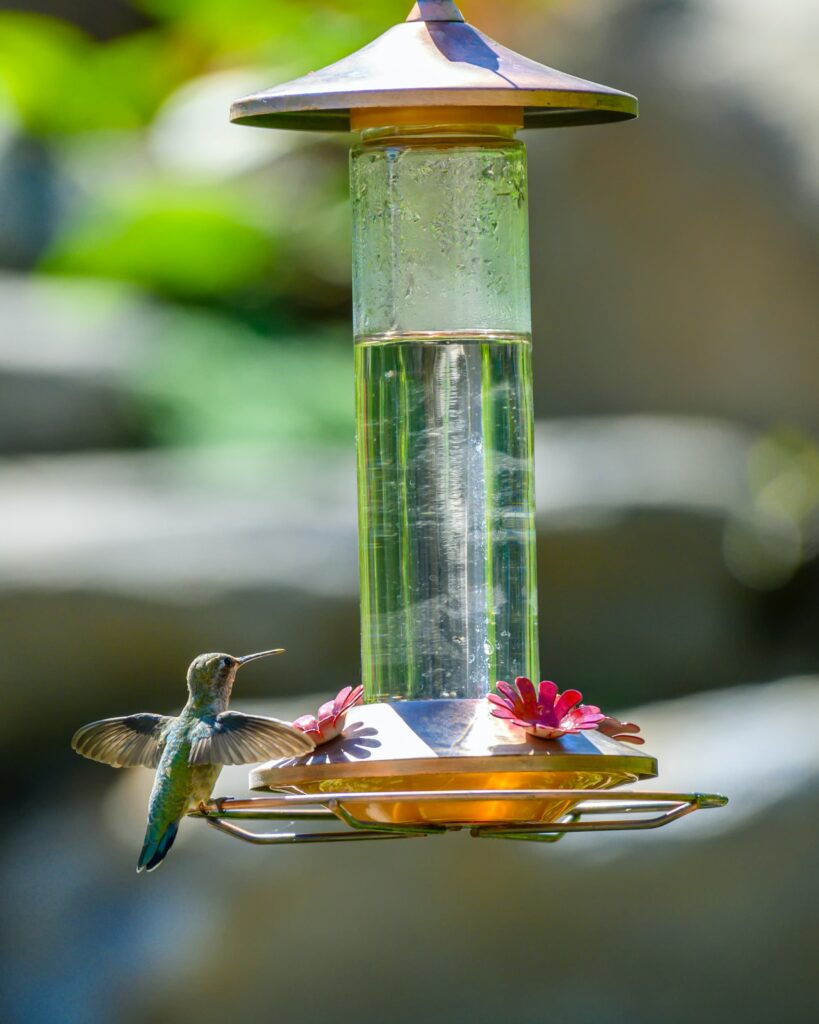
How to make Hummingbird Food
Hummingbirds survive almost exclusively from nectar. Which is a fancy way of saying these birds are sugar fiends.
It doesn’t get much easier than making hummingbird food. To make hummingbird food, mix water and white sugar in a 4:1 ratio.

Bring water to a boil, then add one-quarter parts white sugar, and stir until it all dissolves. For example, if you want to make one cup of food, boil one cup of water and add 1/4 cup of white sugar. Allow the mixture to cool to room temperature (do not refrigerate) before putting it in your feeders.
It’s important when making hummingbird food to use only white sugar. Honey and agave syrup are known to propagate fungi or bacteria that can cause lethal infections in hummingbirds. Likewise, sugar-in-the-raw, stevia, and Splenda can cause severe intestinal distress and even death for hummingbirds.
In conclusion, when it comes to hummingbird food, keep it simple.
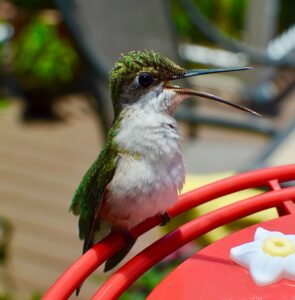
How to Keep Bees Away from Hummingbird Feeders
One of the major issues that occur when keeping hummingbird feeders is that they can become bee feeders, kicking out all the hummingbirds.
Bees are also nectar fiends, and depending on the state and position of your hummingbird feeder you may find it being swarmed with hungry (and confused) honey bees. There are certainly ways to prevent and cure these issues.
If bees have already found their way into your feeder, completely emptying and removing your feeder for 3-4 days. While your feeder is in quarantine, wash it thoroughly with soap and hot water. (I like to use almost boiled water to rinse my feeders. They are metal, not plastic, and the hot water helps thoroughly remove sticky residue on the outside of the feeders.) When your freshly cleaned bird feeder is done with quarantine, relocate it.

To prevent a bee swarm at your feeder, make sure the location of your feeder is protected from wind, or other potential sources of damage. Damaged, leaky feeders tend to attract bees worse than clean feeders. Along that line, make sure to clean your feeder and replace it with fresh food once a week. If you make your food in bulk, it can be kept in the refrigerator, but allow the mixture to warm to room temperature before setting it out.
The color of your feeder is another surprising way to repel bugs. Insects, including bees, tend to be very attracted to the color yellow, but they feel so-so about red. Hummingbirds however, love red. If you can opt for a red feeder, or use non-toxic paint to change up your feeder. Bee guards are also a useful preventative measure, as they keep bees from bee-ing able to get nectar from the feeder.
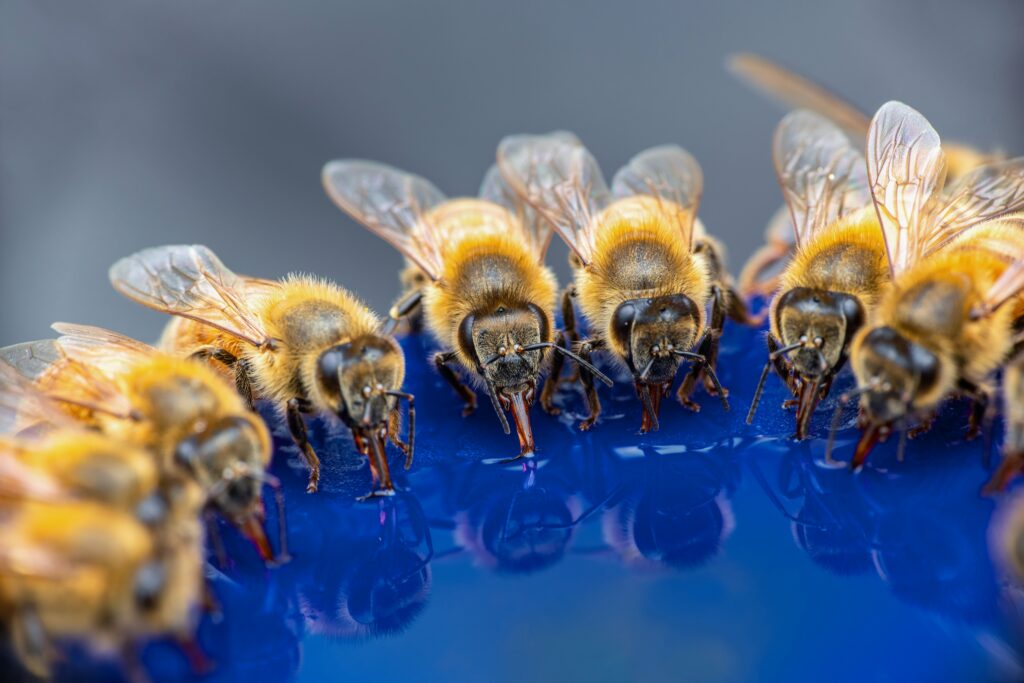
Finally, if you are struggling with bees at your bird feeder, consider creating a feeder of the bees’ own. Bees prefer a sweeter food, with a 2:1 ratio of water to sugar. For more information on creating a bee-friendly water feeder, click here.
When to put out Hummingbird Feeders

This mostly depends on your region. If you live in the Atlanta area, have your feeders out Mid March to April. Hummingbirds are migratory, so if you live in the warmer climates where they flock to or live year-round, such as Arizona, Florida, South Texas, you can leave your feeders out year round
South US February – March
Central US March – April
North US April – May
Alaska + Canada May – June
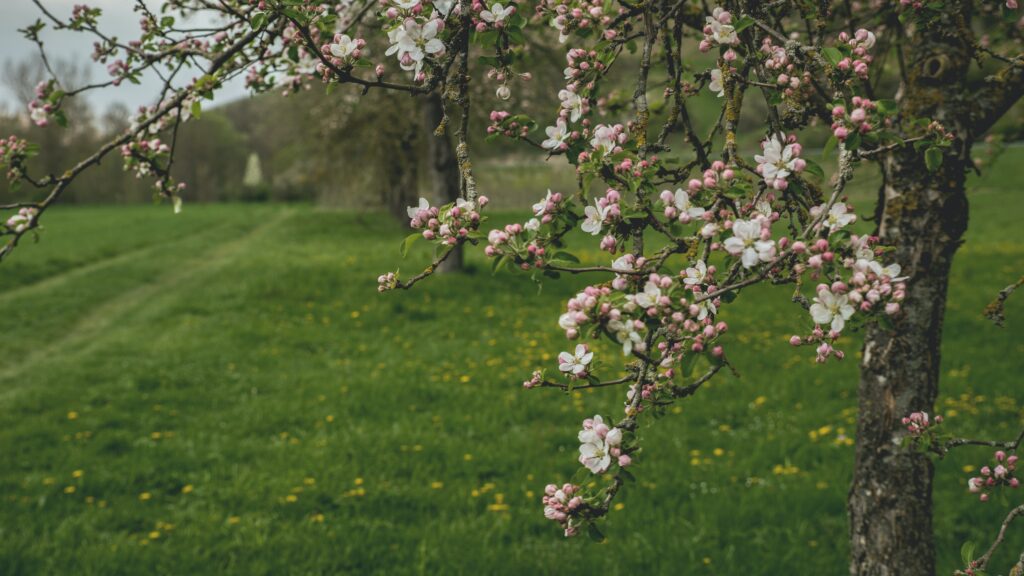
One of the best indicators that it’s time to put out your feeders is when flowers start to bloom and tree blossoms are beginning to swell. If you want to get super dedicated, check out some of your local hummingbird-watching forums! It’s always better to have your feeders out early than late.
How to Clean Hummingbird Feeders
Since hummingbird food is quite literally syrup, it is, predictably, extremely sticky. To clean a hummingbird feeder, I recommend filling your sink with hot, hot water and dish soap. Disassemble the feeder and submerge it in the soapy water. Allow it to sit for several minutes and then scrub! If the feeder still feels sticky, rinse each piece with some ~almost~ boiling water, then soak and repeat.

Conclusion
Hummingbirds are one of North America’s coolest residences– inviting them into our gardens can be such a simple and rewarding treat! I hope you’ll try putting out some hummingbird feeders, and let us know how it goes! Send us your observations to [email protected], or tag us on social!
